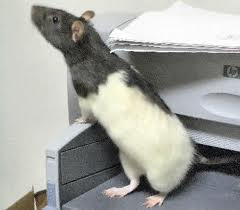Effects of aqueous Cucurbita pepo Linn seed extract on some haematological parameters and serum electrolytes of lactating albino rats
Keywords:
Calcium ion, Cucurbita pepo linn, Lactation Packed cell volume, Red cell, Leucocytes, Sodium ion, Potassium ionAbstract
The present study investigated the effects of aqueous Cucurbita pepo Linn seed extract on some haematological parameters and serum electrolyte concentration of lactating albino rats. A total of twenty five (25) female healthy wistar albino rats were used for the study. They were assigned into the following groups, Group 1, Served as control group and received 1ml of distilled water, Group 2, Received metoclopramide 5mg/kg body weight, Group 3, Received 250 mg/kg b w of C. pepo L,. Group 4, Received 500 mg/kg b w of C. pepo L. and Group 5, Received 1000 mg/kg b w of C. pepo L. All regimen was given orally once daily for a period of eight (8) days, starting from day 3 to day 11 of lactation. The acute toxicity and phytochemical screening were carried out. The result of acute toxicity studies showed that the aqueous Cucurbita pepo Linn seed extract was safe up to 5000 mg/kg b w. Phytochemical screening of the extract revealed the presence of carbohydrates, glycosides, cardiac glycosides, saponins, tannins, flavanoids and alkaloids. The result obtained from this study showed that the extract significantly decreased (p<0.05) the level of red cell count in the group treated with 1000 mg/kg b w when compared with the control group. However, total white blood cell count and neutophil counts were statistically significantly decreased (p<0.05) in the groups treated with 1000 and 250 mg/kg b w respectively when compared to the control group. However, there was a significantly decreased (p<0.05) serum sodium ion and potassium ion level in the groups administered with 500 and 250 mg/kg b w respectively when compared to the control group. It can be concluded that the plant extract did not produce a significant change on haematological parameters and serum electrolyte profile. However, the red cell count and serum sodium and potassium ions were significantly altered when compared to the control group.
References
Abdel-Rahman, M.K., 2006. Effect of pumpkin seed (cucurbita pepo L) diets on benign prostatic hyperplasia (BPH),
Chemical and morphometric evaluation in rats, World j. chem., 1, 33-40.
Adeneye, A.A., Ajagbonna, O.P., Adeleke, T.I., Bello, S.O., 2006. Preliminary toxicity and phytochemical studies of
the stem bark aqueous extract of Musanga cecropioides in rats. J. Ethnopharmacol., 105, pp. 374-379.
Adepoju, G.K.A., Adebanjo, A.A., 2011. Effect of consumption of Cucurbita pepo seeds on haematological and
biochemical parameters, Afr. J. Pharm. Pharmacol., 5(1), 201, pp. 18-22.
Burkill, H.M., 1985. The useful plants of West tropical Arica. JSTOR Plant Sci., 1, 1-4.
Dacie, J.V., Lewis, S.M., 2006. Investigation of haematological disorders. Practical Haematology, Churchill
Livingstone Edinburgh, United Kingdom., 177-180.
Farnsworth, N.R., 1989. Screening Plants for New Medicines, Wilson, E.O (Ed). Biodiversity Part II, National
Academy Pres, Washington., 83 – 97.
Gile, N.S., Kaur, R., Avora, R., Bali, M., 2011. Screening of antioxidant and antiulcer potential of citrulleus
colocynthsis methanolic seed extract. Res. J. Phytochem., 2, pp. 98-106
Harold, V., Alan, H.G., Maurice, B., 1980. Practical Clinical Biochemistry.William Heinemann, London, 890-913.
Hassan, S.W., Umar, R.A., Ebbo, A.A., Matazu, I.K., 2005. Phytochemical, Antibacterial, and Toxicity study of
Parkinsonia aculeate L. (Fabaceae). Niger. J. Biochem. Mol. Biol., 20, pp. 89-96.
Kayode, A.A.A., Kayode, O.T., 2011. Some Medicinal Values of Telfairia occidentalis, A Review. Amer. J. Biochem.
Molecular Biol., 1, pp. 30-38.
Lloyd, Y.Y., Mary, A.K.K., 1999. The clinical use of drugs. 6th Edition. Publisher, Appl. Therapeutics Inc. Vancouver
WA. Chapter 4, pp. 11-19.
Lorke, D., 1983. A new approach to practicl acute toxicity testing. Arch. Toxicol., 54,275-287.
Magalhaes, P.H., Appell, J., 2008. Involvement of advanced glycation end products in the pathogenesis of diabetes
complication, the protective role of regular physical activity. Eur. Rev. Aging. Phys. Act., 5, (1), 17-29.
Oyedemi, S.O., Yakubu, M.T., Afolayan, A.J., 2011. Antidiabetic activities of aqueous leaves extract of Leonotis
leonurus in streptozotocin induced diabetic rats. J. Med. Plant Res., 5, (1), 119-125.
Page-wilson, G., Smith, P.C., Welf, C.K., 2007. Short-term prolactin administration causes expressible galactorrhea
but does not affect born turnover, Pilot data for a new lactation agent. Int. Breastfeed. J., 29,10, 4358-210.
Powers, N.G., 1999. Slow weight gain and low milk supply in the breastfeeding dyed. Clin. Perinatol., 26, 319-430.
Rao, G.M., 1992. Serum electrolytes and osmolality in diabetes mellitus. Indian J. Med. Sci., 46, (10), 301-303.
Schales, O., Schales, S., 1941 .A simple and accurate method for the determination of chloride in biological fluids.
J. Biochem., 140, pp. 879-884.
Segal, M.A., 1955. A rapid electrotitimetric method for determining CO2 combining power in plasma or serum.
Amer. J. Clin. Pathol., 25(10), pp. 1212-1216.
Sofowora, A., 1996. Medicinal Plant and Traditional Medicine in Africa. 2nd Edn., Spectrum Books, Ibadan, Nigeria,
Pp 112.
Trease, G.E., Evans, M.C.,1989. Text book of pharmacognosy,13th edition, Bailler Tindal, London., pp.247-762.
Tyler, V., 1993. The Honest herbal, A sensible guide to the use of herbs and related remedies,3rd ed. New York,
Pharmaceut. Prod. Press.
Vogel, A.I., 1960. A Textbook of Quantitative Inorganic Analysis. Longman Group Ltd. London. 3rd Edit., 882-885.
Watson, C.J., Khaleed, W.T., 2008. Mammary development in the embryo and adult, a journey of morphogenesis
and comm. dev., 135, 995-1003.
Winkler, C.B., Wirleitner, K., Schroecksnadel, H., Schennoch, F.D., 2005. Extract of pumpkin (curcurbita pepo L),
seeds suppress stimulated peripheral blood mononutles cells in vitro. Am. J. Immunol., 1, 6-11.
World Health Organization. 1977. Resolution-promotion and dev. train. res. tradit. med., WHO Document No., 30,
-49.

Published
How to Cite
Issue
Section
Copyright (c) 2014 I. S. Malgwi, K. V. Olorunshola, W. O. Hamman

This work is licensed under a Creative Commons Attribution-NonCommercial-NoDerivatives 4.0 International License.



